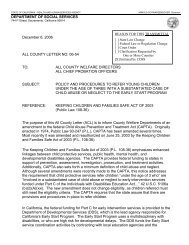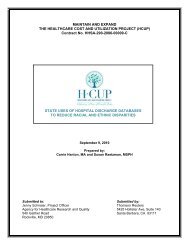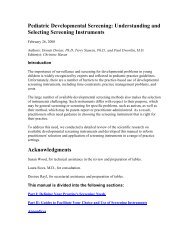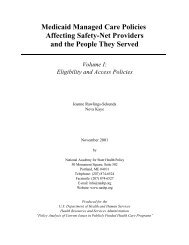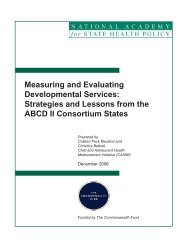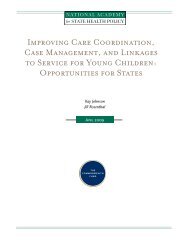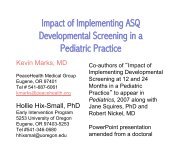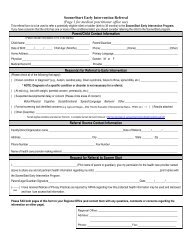Developing Federally Qualified Health Centers into Community ...
Developing Federally Qualified Health Centers into Community ...
Developing Federally Qualified Health Centers into Community ...
Create successful ePaper yourself
Turn your PDF publications into a flip-book with our unique Google optimized e-Paper software.
In 2008, Montana Medicaid’s disease management contract with an out-of-state<br />
vendor came up for renewal. The agency was not completely satisfied with the program;<br />
according to staff, ―it was a lot of money for not a lot of concrete results.‖ In particular,<br />
Medicaid staff described the disease management program as having several<br />
shortcomings:<br />
• The staff of 4.5 full-time equivalents (FTEs) could handle a caseload of only about<br />
325 beneficiaries.<br />
• The program was based mainly on telephone contacts.<br />
• The staff had difficulty addressing beneficiaries’ social needs, such as access to<br />
housing, transportation, and healthy food, all of which have clear implications<br />
for health.<br />
• The disease-based program was limited to four conditions: asthma, diabetes,<br />
heart failure, and chronic pain. Under this model, a patient with well-controlled<br />
asthma would receive services and a patient with uncontrolled hypertension would<br />
receive none.<br />
Montana Medicaid used the contract<br />
renewal period to consider new ways to serve<br />
its high-risk, high-cost population in a way<br />
that would be focused on the ―whole person,‖<br />
rather than just their disease. They wanted a<br />
program that would better reflect the rural and<br />
frontier nature of the state, as well as the<br />
cultural needs of its large Native American<br />
population. According to the director of<br />
Montana’s Department of Public <strong>Health</strong> and<br />
Human Services, the state wanted to develop a program to help people navigate a<br />
complex system and to help ―people who don’t have a voice get a voice.‖<br />
North Carolina Medicaid’s <strong>Community</strong> Care program provided some of the<br />
inspiration for Montana’s care management program. 7 In addition, a presentation to<br />
Medicaid from the Montana Primary Care Association (PCA) describing their work<br />
helped build interest in using FQHCs as care management hubs.<br />
4<br />
According to<br />
Montana’s Department of Public<br />
<strong>Health</strong> and Human Services<br />
director, the state wanted to<br />
develop a program to help people<br />
navigate a complex system, to<br />
help “people who don’t have a<br />
voice get a voice.”



